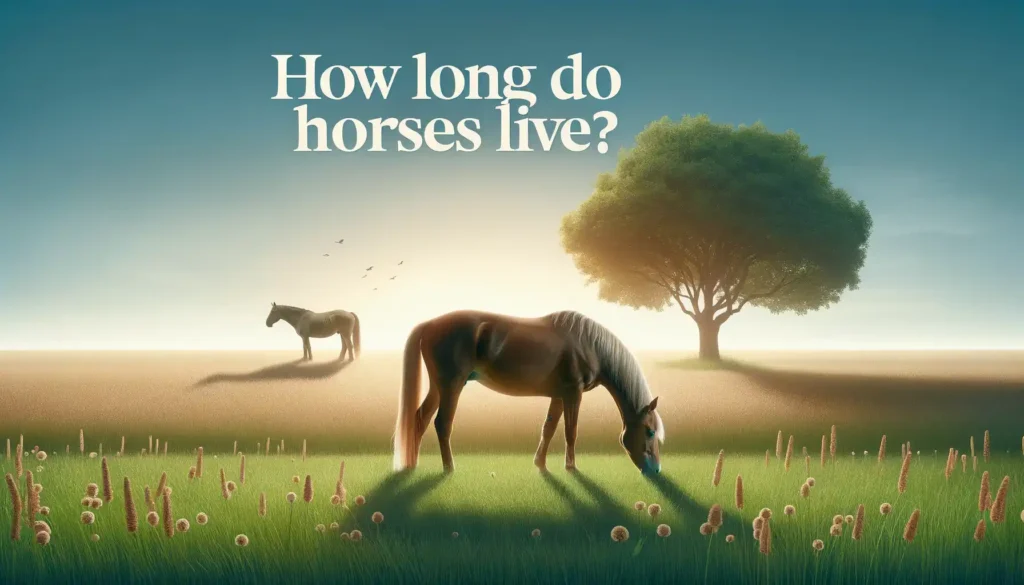Cat owners often wonder – how long will my feline friend be with me? While it’s impossible to predict any individual cat’s lifespan, understanding the average cat life expectancy can help set realistic expectations. Most domestic cats live between 10-15 years, with plenty of variation above and below that typical range.
A cat’s longevity depends on many factors including breed, veterinary care, nutrition, lifestyle, and more. With optimal care, it’s possible for cats to reach 20 years or even older ages. For owners looking to maximize their time with their kitties, promoting excellent health and adapting as cats age are key.
In this article, we’ll dive into the details around the average cat lifespan. We’ll look at how long indoor vs outdoor cats live, impacts of breed, and important care considerations for senior felines. Read on for a comprehensive guide to understanding how long cats live and how to help your own cat thrive at every stage of life.
Skip to Topic
Average lifespan of a Cat

The true average lifespan of domestic cats falls within a range – usually between 12-18 years. However, many variables influence an individual cat’s longevity and healthspan. While we often hear about cats living into their late teens or even early 20s, such ages are not necessarily typical or average.
According to research studies, most pet cats in the United States have an average life expectancy of 12-15 years. However, indoor-only cats generally reach the higher lifespan of 15-18 years, especially those spayed/neutered.
Well-cared for purebred cats can also commonly live 15-20 years. At the lower end of the spectrum, free-roaming outdoor and feral cats have much shorter average lifespans of just 2-5 years.
While 12-15 years is typical, indoor cats receiving high-quality nutrition, enrichment, preventative veterinary care, exercise, and attentive ownership may enjoy lifespans exceeding 15-20 years. Genetics, illness, accidents, and other factors can shorten any cat’s life unexpectedly.
Average Lifespan of Popular Cat Breeds
| Breed | Avg Lifespan in Years |
|---|---|
| Mixed Breed | 13-20 |
| Siamese | 11-15 |
| Persian | 8-12 |
| Maine Coon | 12-15 |
| Ragdoll | 12-17 |
| Sphynx | 12-14 |
| Abyssinian | 9-15 |
| Russian Blue | 10-15 |
| Bengal | 12-16 |
| Burmese | 9-13 |
Key Takeaways:
- Mixed breeds tend to live the longest, averaging 15-20 years. Their diverse genetics increase health and vigor.
- Persians and Siamese have the shortest lives at 8-15 years due to inbreeding and genetic health conditions.
- Most purebred cats average 10-15 year lifespans if cared for properly.
- Maine Coons and Ragdolls tend to live longer than other purebreds.
- Proper preventative care can help cats exceed the averages for their breed. Lifestyle factors like indoor vs outdoor have a big influence.
The Myth and Reality of Cat Lifespans
Despite the mythical “nine lives” attributed to cats, our feline friends only have one life to live just like humans and other animals.
This myth likely arose from observations of cats’ agility and apparent ability to survive incidents that would seriously injure other creatures. However, cats do not actually possess multiple lives or any kind of supernatural powers.
In reality, the average lifespan for domestic cats ranges from 12-18 years. Indoor cats generally reach the higher end of that spectrum, with some living to 20 years or beyond when provided with attentive care.
On the other hand, feral cats have much shorter lives spanning just 2-5 years on average. With proper healthcare, nutrition, exercise, enrichment, and preventative treatments from an early age, pet cats can achieve long, high-quality lives of 15 years or more.
A cat’s longevity depends on a mix of genetics, lifestyle factors, medical care, and luck in avoiding serious illnesses or injuries. Some beneficial factors include spay/neuter, indoor lifestyles, high-quality nutrition, routine veterinary care, and attentive owners to detect health problems early.
Detrimental factors include obesity, lack of medical care, chronic diseases like kidney disease or thyroid imbalance, cancer, infections, trauma from accidents, and exposure to contagious diseases outdoors. With meticulous care and wellness maintenance, cats can enjoy long golden years with their human families.
Breed-Specific Lifespans: Which Cats Live the Longest?

Just as with dog breeds, different pedigreed cat breeds have characteristics that predispose them to shorter or longer average lifespans. When provided with optimal veterinary care, nutrition, and responsible ownership, some cat breeds stand out for their impressive longevity.
One breed known for its long lifespan is the Burmese. Burmese cats typically live 16-20+ years, significantly exceeding the 12-15 year average for mixed breed cats.
They are described as robust, energetic, and often retaining kitten-like personalities late into their senior years. Their longevity may stem from good genes as well as their playful and engaging temperament keeping them active and mentally stimulated.
Other cat breeds reported to commonly reach ages of 15-20 years include:
- Siamese
- Russian Blue
- Persian
- Maine Coon
- Manx
Breeds with shorter average lifespans of 10-15 years include the Sphynx, Ragdoll, and Scottish Fold. Still, any well-cared for cat can beat the odds and live a long life by avoiding obesity, inheriting lucky genes, and having diligent preventative healthcare.
Regular vet visits, vaccinations, parasite control, dental care, exercise, mental stimulation, and proper nutrition from kittenhood into the senior years helps set the stage for a long, vibrant feline life.
The Weight Factor: How Bodyweight Influences Lifespan?
A cat’s bodyweight has a major impact on their expected longevity. Studies have shown overweight and obese cats suffer up to a 6-month decrease in lifespan for every 1 kg (2.2 lbs) of excess weight.
With the ability to pack on pounds easily when overfed and under-exercised, maintaining an optimal weight is crucial for cats to achieve maximum lifespans.
The prime culprit in feline obesity is taking in more calories than expended through normal activity, growth, and metabolism. Like humans, many cats love food and can overindulge when given free-choice feeding.
Obesity stresses the joints, heart, respiratory system, and more – taking its toll in the form of arthritis, diabetes, heart disease, cancer, and other weight-related disorders.
Preventing obesity and maintaining weight in the optimal range are important services veterinarians provide. Routine weigh-ins, body condition checks, and dietary counseling help set cats up for longevity.
Portion-controlled meals, interactive feeders, scheduled playtime, and environmental enrichment all help cats stay active and engage their natural hunting behaviors. By keeping weight under control, cats can add years to their lifespans and avoid many chronic diseases of aging.
The Great Debate: Indoor vs. Outdoor Cats
One of the biggest factors affecting a cat’s lifespan is whether it lives exclusively indoors versus being allowed outdoors. On average, indoor cats live significantly longer lives compared to free-roaming outdoor cats.
Indoor cats have average lifespans of 15-20 years. Keeping cats indoors protects them from common hazards faced by outdoor cats, including:
- Predators like coyotes, foxes and birds of prey
- Vehicle collisions
- Poisons like antifreeze, pesticides, fertilizers
- Contagious diseases spread by other cats/wildlife
- Parasites like fleas, ticks, intestinal worms
- Extreme weather conditions
- Fighting with other outdoor cats over territory
Despite some risks like obesity, boredom, and litterbox issues, indoor lifestyles are strongly recommended by veterinarians and animal welfare experts for cat safety and longevity. Responsible cat owners can provide enriching indoor environments to keep confined cats healthy and engaged.
Outdoor access should be limited to controlled circumstances like:
- Enclosed “catio” spaces
- Harness/leash walks
- Closely supervised time in a yard
By making indoor living enjoyable for cats while minimizing risks, owners enable longer, safer lives for their feline companions.
Summary
While cats may have nine lives in mythology, in reality most domestic cats live 10-15 years with proper care. Indoor cats cared for by attentive owners tend to reach the higher end of that range.
There are many factors that influence feline longevity including breed, spay/neuter status, nutrition, and veterinary care. Providing an enriched home environment and adapting as your cat ages can help maximize lifespan and quality of life.
The average cat lifespan has increased steadily over the decades thanks to advances in healthcare. With diligent preventative care and early treatment when issues emerge, more cats than ever are living into their late teens and even early 20s.
While no cat can live forever, responsible cat guardians can utilize the advice provided in this article to nurture long, healthy lives.
Understanding the expected cat lifespan for your breed and lifestyle is important. But try not to obsess over the numbers. Instead, focus each day on providing the very best nutrition, exercise, enrichment, and bonding experiences you can for your cat.
Cherish every moment together. With excellent care tailored to your cat’s evolving needs, you will be rewarded with a closer pet relationship as you accompany your feline companion on the lifelong journey of health, joy and connection that pet guardianship provides.



